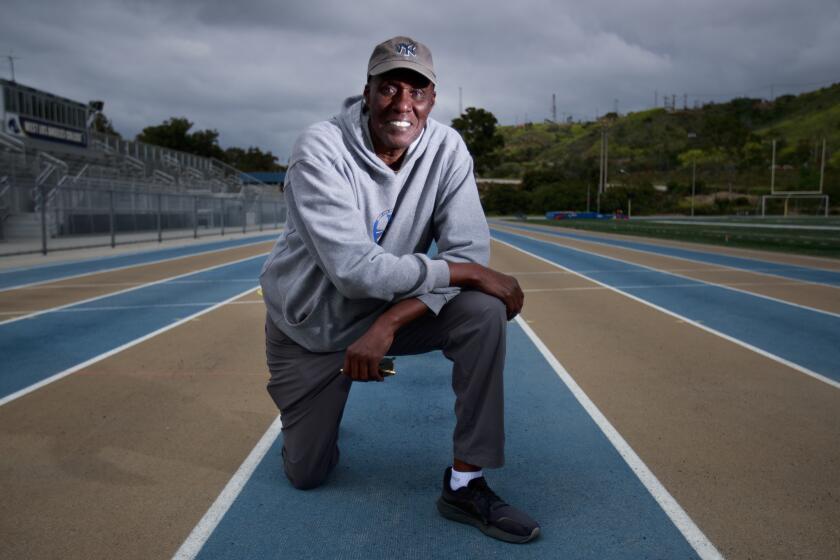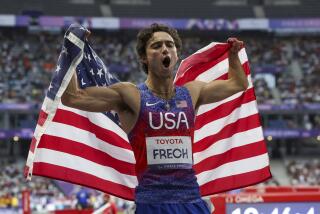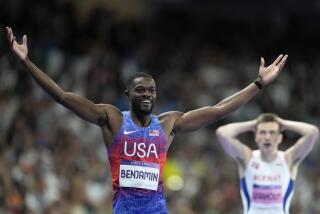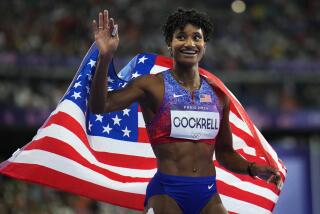Sydney McLaughlin-Levrone’s second-place finish at 400 meters increases intrigue
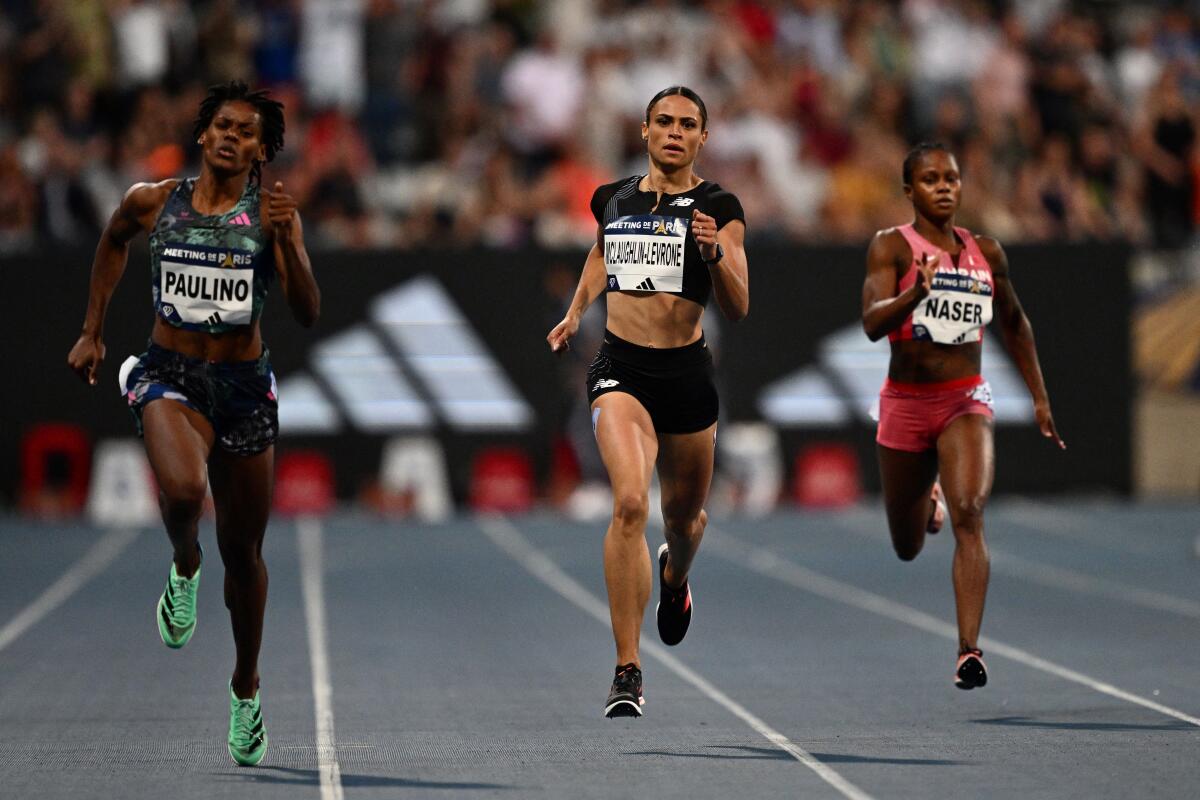
In the 10 months since producing a world-record time that redefined what was possible in the 400-meter hurdles, Sydney McLaughlin-Levrone had raced outdoors just once, and not since August.
The void was filled by projections about what the sprinter, only 23, could run — particularly if she added a new event.
The wait ended Friday in Paris. McLaughlin-Levrone, the New Jersey native who has trained primarily in Los Angeles under coach Bobby Kersee for two years, ran the 400 meters in 49.71 seconds.
During the Paris stop of the Diamond League, the sport’s highest-profile circuit, that saw the fastest times run by Faith Kipyegon in the women’s 5,000 meters, Lamecha Girma in the men’s 3,000-meter steeplechase and Jakob Ingebrigtsen in the men’s two-mile, McLaughlin’s second-place finish was no less intriguing. It was a preview of what could be the second chapter of a career that already claims two Olympic gold medals and three world championships.
“I was very pleased,” Kersee said in a phone interview with The Los Angeles Times after the race. “She did exactly what I asked her to do and the things that went wrong, I know what I could do to correct it and get her ready for our national championships.”
By virtue of her world championships title last summer, McLaughlin-Levrone owns an automatic berth in the 400 hurdles for the next world championships, set for August in Hungary. Kersee said he will know her recovery early next week and whether McLaughlin-Levrone will compete again before the U.S. championships on July 6-9. With her automatic bid in their back pocket, Kersee’s focus has been on trying McLaughlin-Levrone this summer in the 400 meters and opened the possibility for competing in both. Whether she runs both or not at the world championships is something she’s still deciding, McLaughlin-Levrone told reporters in Paris on Wednesday.
Bobby Kersee has helped transform Sydney McLaughlin-Levrone, Athing Mu and many others into champion runners — and he shows no signs of slowing down.
That build-up, and the dearth of chances to see her race, is why Friday became a highly anticipated debut.
“Running sub-50 the first time out, [personal record], and going out as hard as she did for me, I’m pleased,” Kersee said.
Only 10 women have run a 400 faster than McLaughlin-Levrone’s season-opener Friday since 2021, a span that includes an Olympics and world championships, leaving her among a select class of athletes whose times could theoretically reach the final of a world championship. She sprinted hard through the race’s first half but was eventually caught by Marileidy Paulino, the Olympic and world championships silver medalist.
Watching the race at his home, Edwin Moses, the famed 400-meter hurdler who won 122 consecutive races between 1977 and 1987, said it reminded him exactly of an open 400 meters he raced in Belgium in 1977 in which he started fast but faded.
It was a lesson, he said, of the stark differences between the events that share a distance but “biomechanically are completely different animals,” he said. The hurdles rewards speed but also precision — the number of steps between hurdles, the right technique to clear a hurdle and land. The open 400 hinges on turning the feet over as fast as possible and maintaining it. It can lead to a different level of fatigue, Moses said.
“It’s great training for the 400 hurdles because the kind of fatigue that I know she experienced, she’s going to experience that between the ninth and the 10th hurdles so that’s the upside of it, that she ran a race in which she will feel like she’s going to feel in the 400 hurdles,” Moses said. “If she continues to do 400 hurdles that might be a big plus for her.”
Friday’s season-opening race for McLaughlin-Levrone showed reasons for optimism of her potential in the open 400, the grip that existing 400-meter specialists still hold on the event and the technical gap she must overcome for a record attempt.
“I just got through talking to her and she feels the difference in terms of the technique with the 400 versus the 400 hurdles,” Kersee said. “And it gives her something to wrap her mind around now in practice, to understand the technical differences in what you’ve got to do in the latter half of the race in the open 400 versus the 400 hurdles.”
Some within the sport and Kersee’s training group believe Marita Koch’s 1985 world record of 47.60 seconds, which no athlete has come within a half-second of breaking, could one day be within reach — an optimism that partly springs from her 47.91-second leg on the U.S. gold-medal 4x400-meter relay at July’s world championships, which was history’s seventh-fastest woman’s relay split, according to statistician Mark Butler.
In May, McLaughlin-Levrone said that her first thought after setting the new 400 hurdles world record last summer of 50.68 seconds was intense pain. One of her next emotions was relief. She had felt the intense scrutiny and expectations that followed her into last year’s championships after setting the world record only weeks earlier.
“Getting over the mental hurdle of getting through that race, that was like the victory,” she said.
Her race Friday showed why no shortage of hype will follow her into August’s world championships. McLaughlin-Levrone said she ultimately wants to define herself against her own expectations.
“Obviously, people are looking at the 400 record, maybe moving to the shorter, moving to the 200, so on and so forth,” McLaughlin-Levrone said in May. “But honestly, if I’m being completely honest, I just want to run and see how fast I can run every single day. Whether I break records or don’t break records, or win this or win that, like every day, to me, it’s a mental hurdle of I don’t always want to do this, but I’m going to do this and being able to push myself to do things that I didn’t think I was capable of.
“And that sounds like a very generic answer, but it’s the honest truth. I think when you place too many expectations on yourself, you put yourself in a position to be, I don’t know, defined by them if you don’t reach them. And I don’t want to do that.”
More to Read
Go beyond the scoreboard
Get the latest on L.A.'s teams in the daily Sports Report newsletter.
You may occasionally receive promotional content from the Los Angeles Times.

